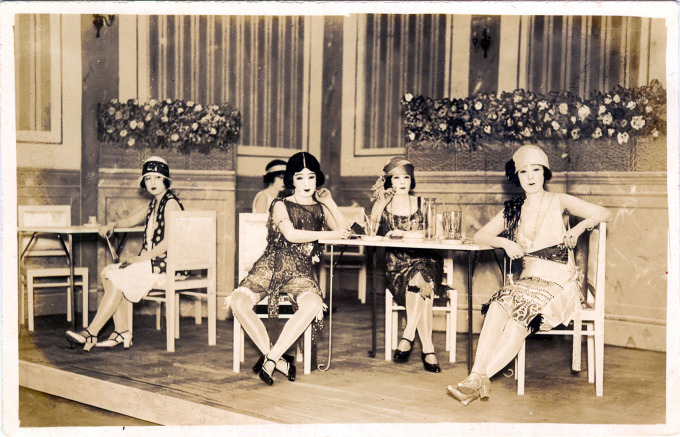“Dance halls, where young men could pay to spend time in the arms of a taxi dancer and possibly arrange to meet her after hours, prove equally appalling to moral reformers.
“The first halls opened in 1925, and in Tokyo in the same year, the MPD issued an ordinance prohibiting ‘underage students’ from entering them. Osaka Prefecture outlawed dance halls in 1927, but they continued to thrive in the capital, prompting new crackdowns by the MPD’s juvenile deliquency and vice brigades in 1929 that compelled a number of halls to close.
“Reformers such as the WCTU’s Hayashi Utako wholeheartedly endorsed these measures, remarking that dance halls were inappropriate to a society in which young people had not been taught how to relate to members of the opposite sex.
“But students, as well as other young men, continued to dance and to look for dates. And while dancers had to be increasingly cautious about going out with their clients for fear of losing their jobs and their police-issued dancer’s permits, police in the mid-1930sd continued to report problems with dancers who took ‘students, yotamono, and wealthy men’ as their lovers.”
– Bad Youth: Juvenile Delinquency and the Politics of Everyday Life in Modern Japan, by David R. Ambaras, 2006

“Taxi dancers” at a Tokyo dance club, c. 1930. Using a ticket-a-dance system, “taxi dancers” (like a taxi cab driver who provided a specific service for a specific period of time) would dance with any man who was willing to pay.
“Ginza Dance Hall boasted a revolving band-stand, while the most opulent and celebrated establishment of Japan’s Jazz Age, Ballroom Florida (named after a Parisian dance hall), took up the entire third floor of Akasaka’s Tameike Hall. Large halls such as Ginza, Florida, and Teitoza in Tokyo employed more than one hundred dancers apiece, bringing the total number of professional dancers in Tokyo to nearly eight hundred, according to a 1933 survey. Florida was known for contracting elite foreign bands to play the night shows, and Douglas Fairbanks, Charles Chaplin and other celebrities from the worlds of politics and entertainment entered their names on the police-mandated guest register.
“While foreign bands would remain a staple during Florida’s golden years, after 1930 the best native bands, such as Kikuchi Shigeya’s group, performed matinees for early-bird dancers. The dance hall craze propelled Japan’s most talented musicians into the ranks of high-paid entertainers, at a time when unemployment afflicted college-educated people nationwide … Jimmy Harada recalled making nearly twice the starting salary of a college-educated corporate employee, and music writer Horiuchi Keizo has estimated that dance hall musicians made as much as ¥200 to ¥300 a month at a time when ¥50 was considered a good income.
“… Well before hostilities between Japan and the United States formally began, jazz was labeled ‘enemy music,’ and local and national law enforcement did not hesitate to to harass dance halls and other establishments that featured jazz.
“Police dropped in on jazz coffeehouses on a whim and scolded customers as they sipped their coffee: jazz was a ‘decadent drug,’ they bellowed, insisting it corrupted anyone seduced by its siren song … By 1939 dance halls began closing for lack of business, as social censure effectively inhibited customers from patronizing them.”
– Blue Nippon: Authenticating Jazz in Japan, E. Taylor Atkins, 2001


Pingback: Shimbashi District. | Old Tokyo